Copywriting is the art and science of crafting persuasive messages that drive results. It’s the key to creating impactful ad campaigns, winning over customers, and driving growth for your business. Scientific research has shown that copywriting has the power to influence people’s emotions and change their behaviour.
Copywriting is an essential skill for any marketer, entrepreneur, or a business professional who wants to create impactful and persuasive communications. By understanding the principles of copywriting, you can create messages that will influence people’s emotions and drive results for your business.
To write such influencing yet informative content, you should adhere to the following strategies.
1. Write according to the consumer’s buying journey
You should write the ad copy by understanding the consumer’s stage in buying journey and state of mind.
- Awareness stage – where the consumer decides to find a solution for their problem. Your copy should contain questions and pain points connecting the customer’s problem and solution. This will build customers’ connectivity and engagement with your brand.
- Decision stage – where the consumer is confused about buying a product. Adding testimonials, case studies, and customer reviews will lead to sales.
- Consideration stage – they have already done enough research and considered your brand. Adding a Call To Action at this stage is the perfect strategy for those customers.
2. Concentrate more on Benefits than Features
Explaining feature will not influence the audience to choose your product or service. Instead, your audience may not get the point or lose interest in your product or service.
Imagine you are selling sunscreen. Instead of just blabbering about the SPF and PA, tell them your sunscreen will protect their skin and keeps you looking younger.
In the same way, you can convey through pain points that your consumers are facing. For example, tell them they don’t need to worry about tanning or skin cancer anymore or tell them now they can take a sunbath with no worries.
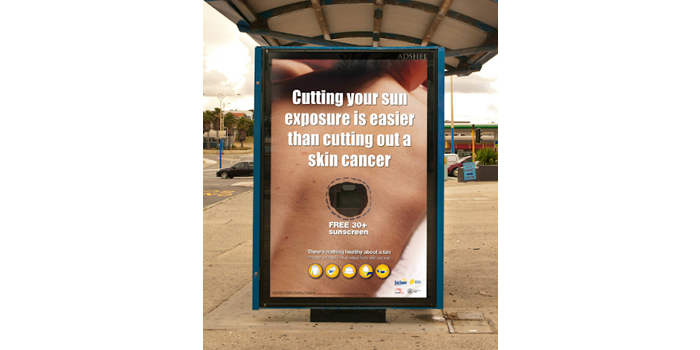
3. Include Call To Action
A Call To Action is a statement or instruction designed to provoke an immediate response from the reader or viewer. It is often used in advertising and marketing materials, such as flyers, posters, and websites.
A Call To Action is usually persuasive in nature. It is often used to convince the reader or viewer to take a particular course of action.
“A study by Stanford University showed that simply changing the words in a call-to-action can increase conversion rates by over 200%”
Following are a few examples of Call To Action you might use in marketing:
BUY NOW, CALL TODAY, SUBSCRIBE NOW, REGISTER TODAY CONTACT US, GRAB TODAY, TRY FOR FREE, LEARN MORE, WATCH NOW, BOOK NOW, CLICK HERE and more.
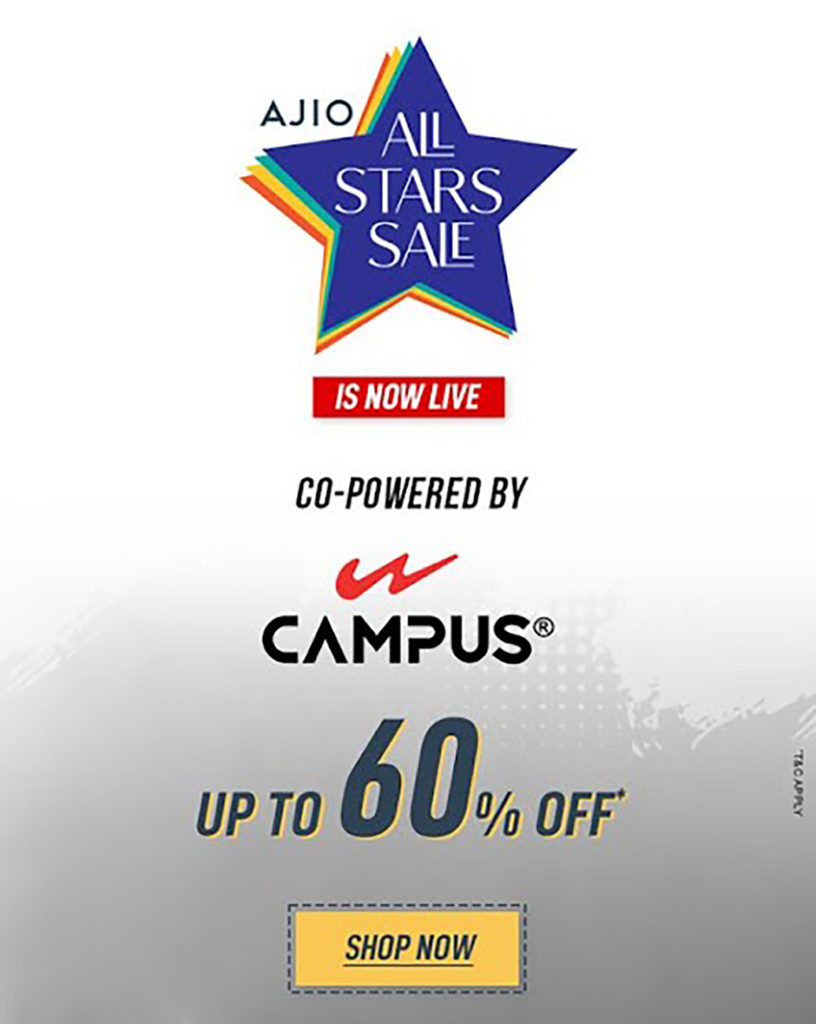
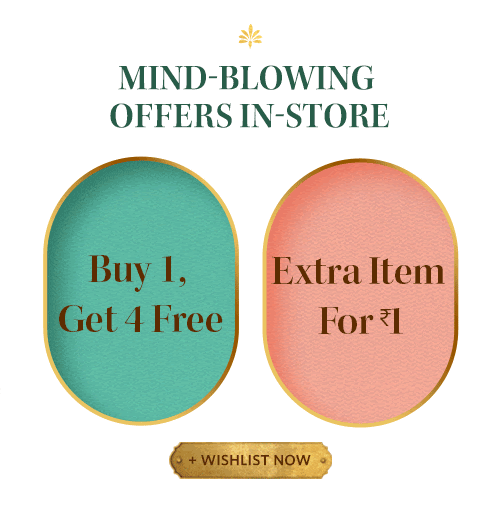
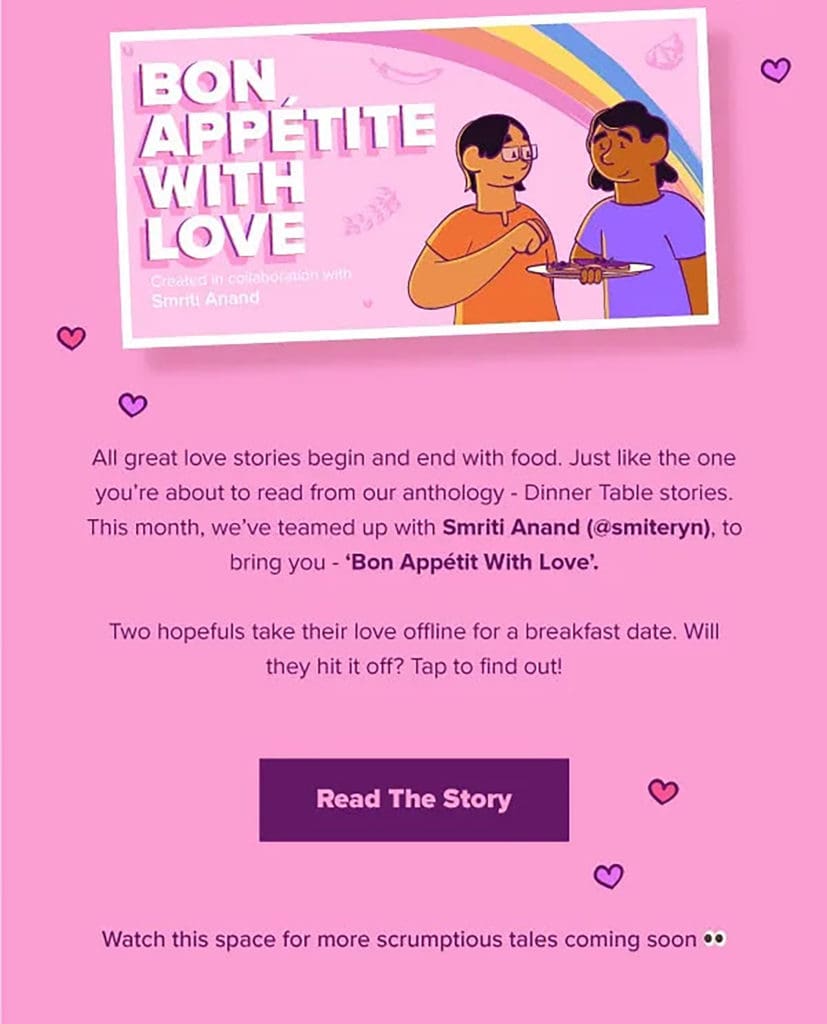
4. FOMO
Do you ever feel like you’re missing out on something? If so, you’re not alone. This feeling is called “FOMO”, or the Fear Of Missing Out. It’s a common feeling triggered by social media, events, or even conversations with friends.
In marketing, FOMO can be used to drive people to take action. For example, if you’re running a sale, you might use FOMO to encourage people to buy before the sale ends.
Recognising and catering to FOMO in your marketing strategy can greatly impact how you craft your messages to potential and current customers. Creating a sense of urgency or offering exclusive deals can encourage consumers to take action before they miss out.
However, it’s important to be careful with FOMO marketing, as it can backfire if consumers feel like they’re being manipulated or pressured.
Examples of FOMO:
- By offering a limited-time offer, brands can create a sense of urgency that leads consumers to make a purchase before it’s too late.

2. Number of Stock Left – The best way to trigger FOMO is to show items left in stock. A product limited in stock is believed to be high quality, and people want to buy it so they don’t miss what others prefer.
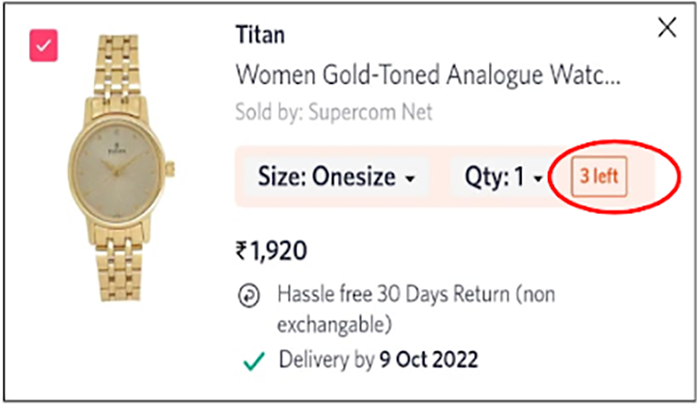
3. Countdown – Using a countdown timer is a great way to emphasize scarcity and make your products appear time-sensitive.
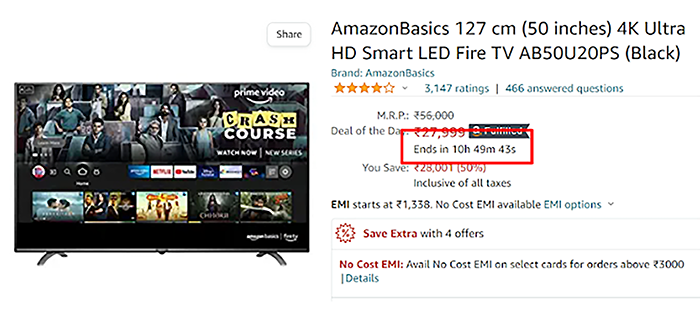
5. Testimonials/ Reviews/ Star Ratings
“We have the hair oil that prevents 100% of the hair fall.”
Prospective customers will presume you’re biased if you say this. Even if it is the truth, people won’t believe it until a client or customer gives feedback.

That is how important Testimonials or Review or Star Ratings are. Customer testimonials are significantly more credible than similar statements from business owners or salespeople. Hence, it is wise to include Testimonials, Reviews, or Star Ratings in your copy to get more credibility.
6. Power words
As the name indicates, power words are magical words that will provoke emotion and trigger your target audience to take action which is profitable for the business or service you provide.
Power words are meant to give life to the regular boring copies.
Example: Buy, Now, Lazy, Live, Sale, More, Don’t, Miss, Save, Best, Off and many more.
Power words can be included anywhere (Headlines, Call To Action, Descriptions) in the copy to attract customers’ attention. This will increase the click-through rate (CTR) and convert driven leads to profitable sales

7. Write like an expert
People are more likely to trust your brand if you sound like an expert on the topic. When discussing your product or service, use statistics and numbers to solidify your claims.
- Use real statistics and numbers
- Add your understanding of it
- Share your experience
- Tell a story
8. Make it all about the audience
Many businesses flout this rule by penning business-centric rather than customer-centric copy. This writing style focuses on how incredible the company is and how marvellous its product is rather than on its customers and what they need. This is a dreadful way to write; unfortunately, it’s a common occurrence.
There is a simple way to identify this type of writing. Company-focused copy employs “we” significantly more than it uses “you.”

Guess you already identify the problem in this copy. Yes. This copy is all about the company, the service they provide and its establishment and so on.
Here is the reason not to write company-centric copies
- Consumers care about the product or service you provide; not about what you do
- They value how you can assist them in achieving their product or service.
Example of Customer-Centric copy for the same catering service company mentioned above
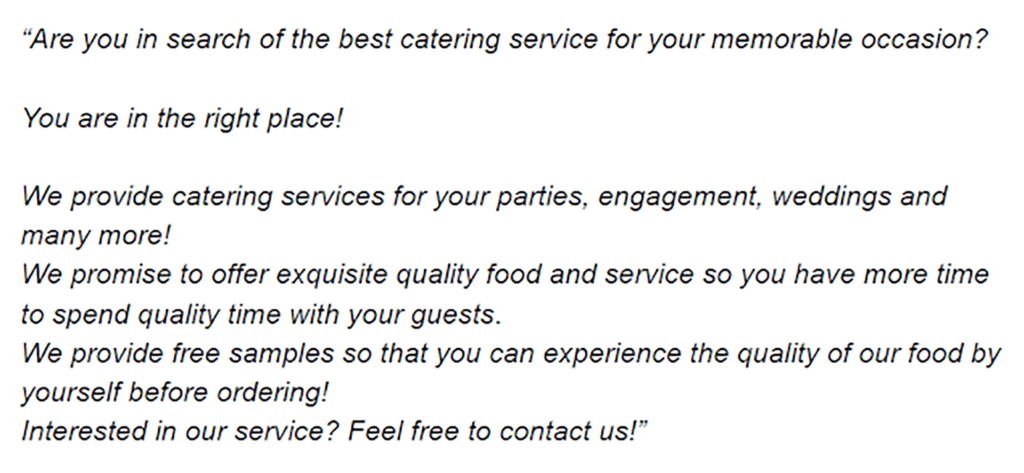
Now you can easily find the difference between customer-centric and company-centric copies. By changing our perspective, the copy becomes much more customer-focused. Rather than simply describing the catering service, it explains what the service offers in the context of the customer and how the service helps people.
Conclusion
This post discussed 8 copywriting strategies that are key to writing convincing copy that persuades your target audience to take action. You don’t need to be a grammar expert to start writing copy. Still, you do need to improve your writing skills enough to connect with your audience and write engaging copy.
Keen to learn more about your business growth strategies? Feel free to be in touch with us. We are happy to be your business growth partner.




